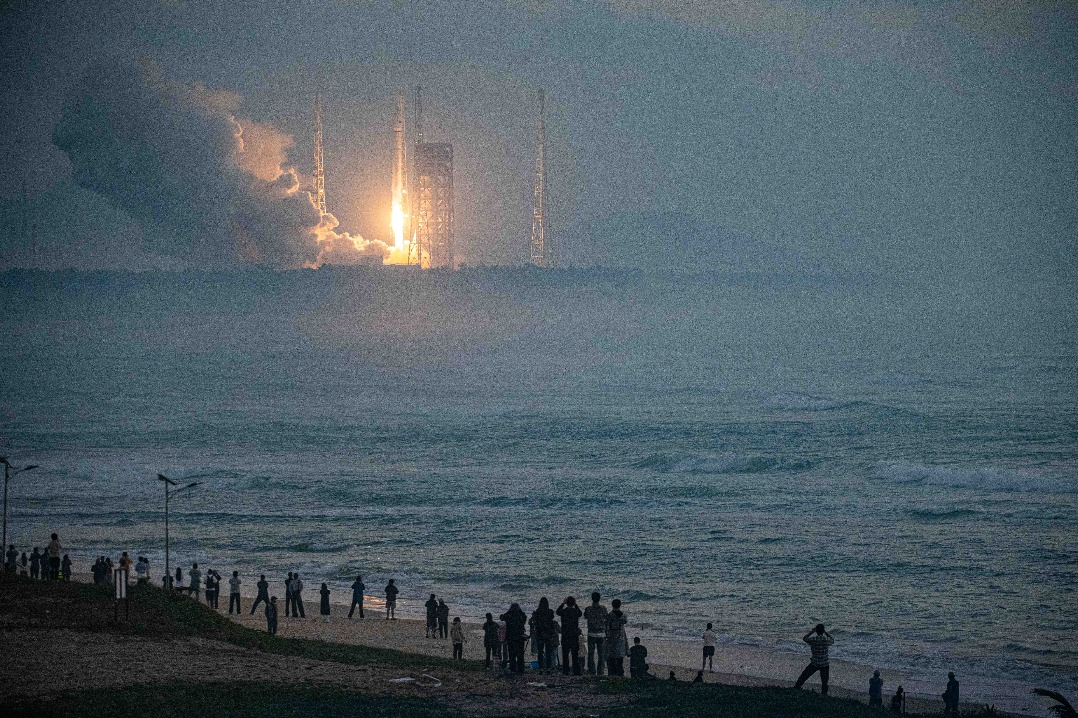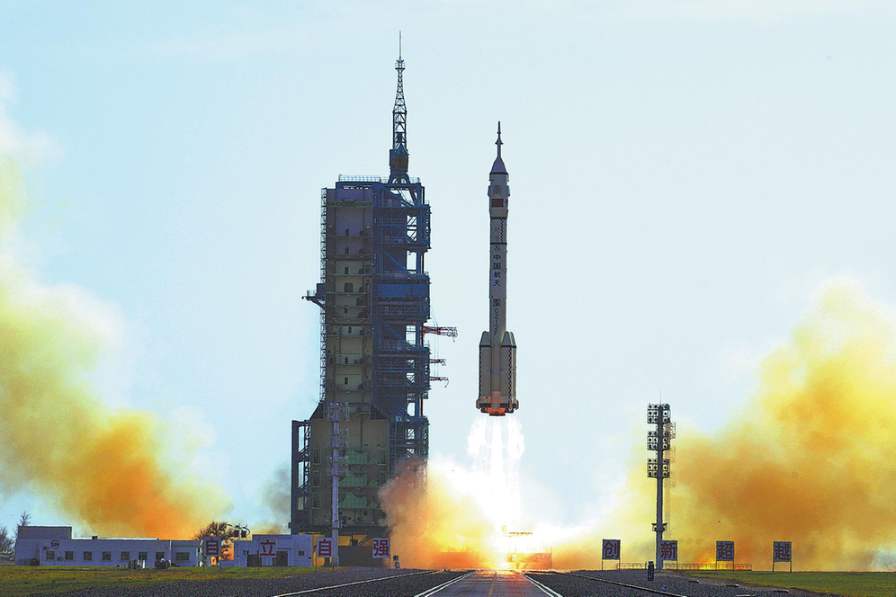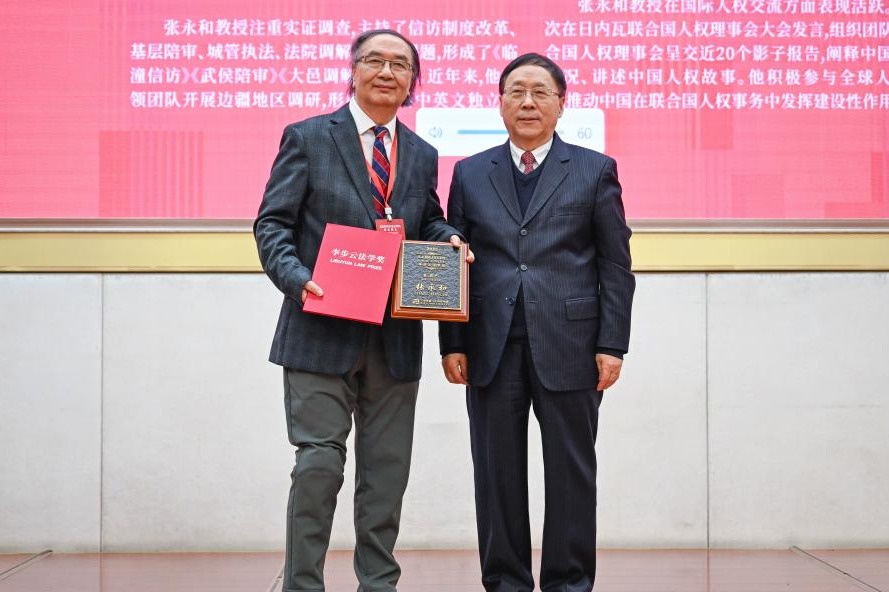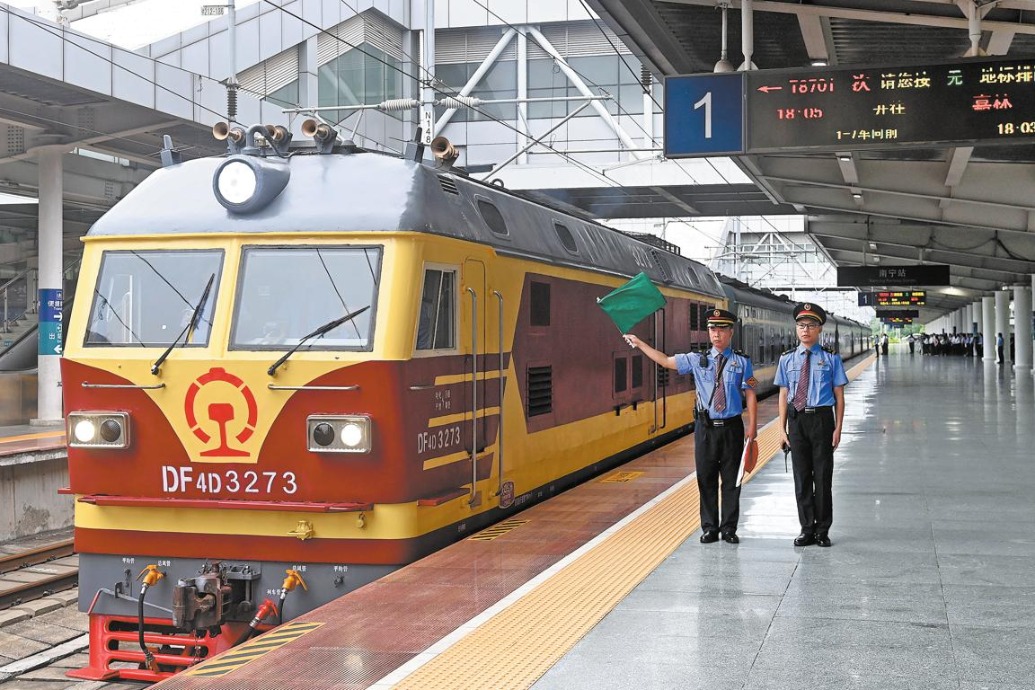Chang'e 5 lands on moon, starts surface operations


China's Chang'e 5 robotic lunar probe has just landed on the moon and will soon start gathering lunar rocks and soil in this landmark mission.
As the landing procedures began as scheduled at 10:57 pm, the lander-ascender combination of the 8.2-metric ton Chang'e 5 started its 7,500-newton-thrust engine to reduce its flying speed and began to descend toward the moon from about 15 kilometers above the lunar surface.
When the lander-ascender reached an altitude of 2.5 km, it conducted a rapid positional adjustment and continued approaching the lunar surface.
During the engine-assisted process, cameras on the lander-ascender took pictures of the landing site and transmitted them to computers to identify possible hazards on the surface such as large rocks so the craft could maneuver to avoid them.
The lander-ascender suspended its descent when it was about 100 meters from the moon and hovered for a short time to carry out accurate detection of obstacles before continuing to descend at a slower, steady speed.
At the last moment of the challenging operation when the craft was several meters above the surface, its engine stopped and it touched down on the lunar surface at 11:11 pm, becoming the third spacecraft to successfully land on the moon in the 21st century. The other two craft that had achieved this feat were also from China — Chang'e 3 and 4.

The selection of Chang'e 5's landing site near Mons Ruemker, an isolated volcanic formation located in the northwestern part of the moon's near side, was not made randomly but was based on a host of considerations, a project leader explained.
Pei Zhaoyu, spokesman for the Chang'e 5 mission, said that project planners considered scientific, technical and engineering factors when choosing an ideal landing site for the spacecraft.
"The first determinant was related to the landing site's scientific value — the place should be unexplored by previous missions and its geological characteristics should be different from those of explored regions, thus helping scientist to deepen our knowledge about the histories of the moon and the solar system," he said.
Then planners would check whether the candidate sites are suitable in terms of technical and engineering capability, according to Pei, who is deputy director of the China National Space Administration's Lunar Exploration and Space Program Center.
"We must make sure that the place where the probe was expected to operate must be safe for landing, sample-collection and launching operations," the spokesman said. "For instance, there should not be a lot of rock pits that would be obstacles during landing. In addition, the area should be covered with sunlight and have a suitable temperature during the probe's surface operations."

Chang'e 5 is expected to work for about two days in the northern region of Mons Ruemker, a mountain overlooking a vast lunar mare called Oceanus Procellarum, or the Ocean of Storms, on the western edge of the moon's near side.
After the two-day surface operations are completed, it will bring about 2 kilograms of lunar samples back to Earth in mid-December, 44 years after the last substances from the moon were returned to Earth, according to the China National Space Administration.
China's largest and most sophisticated lunar probe, Chang'e 5 was launched by a Long March 5 heavy-lift carrier rocket on Nov 24 at the Wenchang Space Launch Center in Hainan province, undertaking the world's first mission since 1976 to return lunar samples to Earth.
The spacecraft has four components — an orbiter, a lander, an ascender and a reentry capsule.
Before landing, Chang'e 5 separated into two parts — the orbiter-reentry capsule combination and the lander-ascender combination — early on Monday morning.
While the lander-ascender has started surface operations, the orbiter-reentry capsule is in lunar orbit at an average altitude of about 200 km above the moon, according to the space administration.
After the collection and packing operations are completed, a 3,000-newton-thrust engine on the ascender will lift it to rendezvous and dock with the reentry module. It will transfer the lunar samples to the module and then separate from it.
The orbiter-reentry capsule combination will then return to the Earth's orbit, where the pair will separate and the reentry capsule will conduct a series of complicated maneuvers to return to a preset landing site in the Inner Mongolia autonomous region in mid-December.
If the mission is successful, it will make China the third nation to bring samples back from the moon, after the United States and the former Soviet Union.
- Wuhan court adopts 'forget it' plush toy to help settle disputes
- Beijing mobilizes for winter's first major snowfall
- Uzbek med students train in Lanzhou under Belt and Road exchange
- PLA warns Philippine jets that illegally entered airspace over Huangyan Island
- Metasequoia avenue in Changsha showcases nature's splendor
- Beijing welcomes its first snowfall this winter




































